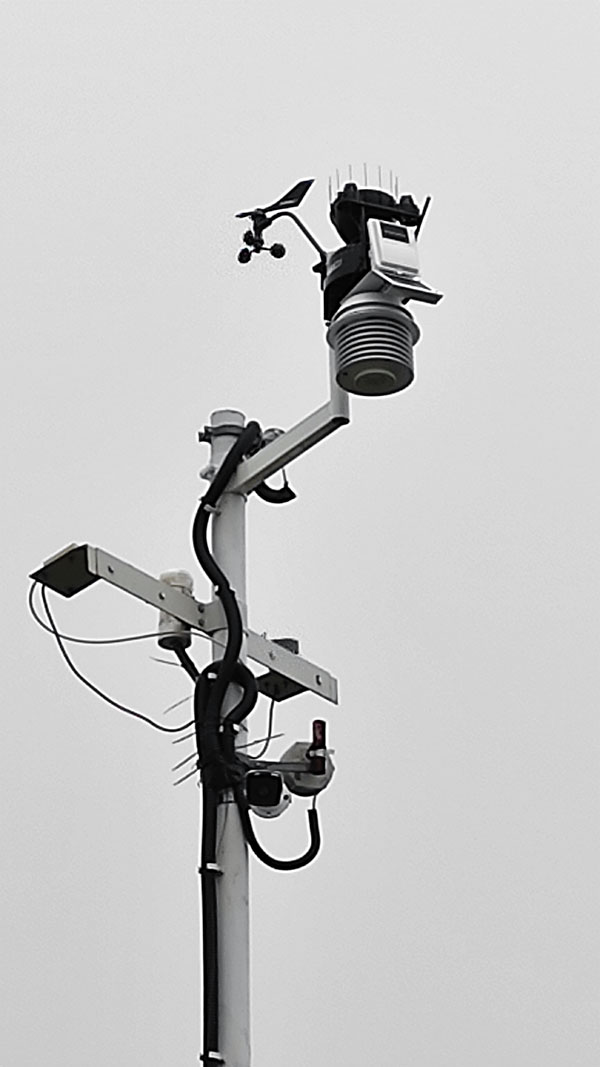Instruments
Astronomers working at the Astronomical Station Vidojevica can use variety of additional instruments that can help them during night time observations. We have started a long-term campaign to measure astro-climate conditions on this location and to assess its quality for astronomical observations.The instruments mounted at ASV are:
The Weather Station that we have in use is a DAVIS Wireless Vantage Pro2 with 24-Hour Fan Aspirated Radiation Shield.

The weather station is battery and solar-panel powered, therefore it is capable for autonomous measurements and data storage. The weather conditions at the summit of Mt. Vidojevica had almost continuous coverage of measurements beginning with April 2011 and thus provided us with the long-term direct and detailed data of meteorological parameters. The Station is composed of an integrated sensor suite (ISS, mounted outdoors at an elevation of 10m above ground level) an indoor sensor and receiver. Thirty-four parameters in total are being measured or calculated at regular intervals of 5 minutes. The ISS combines a rain collector, temperature and humidity sensor, anemometer and solar panel as the sole package. The Station uses frequency hopping spread spectrum radio technology for wireless transmission of weather data at distances up to 300 m. The ISS can also be powered by AC-power adapter or batteries. We have created online access to real-time weather reports, that you can find on the link above.
Allsky camera - type: OMEA 3M, brand: Alcor System
The purpose of these systems is to carry out All or Full Sky surveillance of the night or day sky, and in a continuous fashion. It is possible to assess, in real time, the night sky quality, and to record fast phenomena (meteors and fireballs) or slower (satellites, rockets, noctilucent clouds, zodiacal light, aurora, airglow...).
Thanks to its high sensitivity, this system can record a very good image quality of the night sky, while producing images of stars that will not be trailed by natural Earth rotation, no star tracking is required. File describing how our ALL-SKY camera can be used for (application fields) OMEA 3x/6x Camera (right side as square shape is temperature and moisture sensor) OMEA water tight connectors: USB, POWER and External SENSOR.

Parameter Value
Field of view:
180° x 180° (OMEA 3M)
Wavelength range :
350 to 750 nm (IR cut filter)
Factory focused and tilt tuned with respect to the whole image sensor field.
Camera resolution:
3100 x 2100 (OMEA 3M) 2.4 µm pixel size (Rolling shutter)
Progressive scan, anti-blooming sensor.
ADC resolution:
14 bits for OMEA 3M
Video stream:
ALL Cameras have video stream capabilities
AVI file stream can be created
OMEA 3M: 6.5 fps USB 2.0 - 30 fps USB 3.0
Exposure time:
From 32µs to one hour exposure (All-Sky mode, typically 20s to 75s)
Gain:
Variable, Logarithmic mode from 30x to 10000x
Dome: Acrilic dome
Image download time:
OMEA 3M
To PC interface:
USB 2.0 + 20 m length cable, perfectly full time reliable operation.
Top dome heater:
Automatic dome defrost based on provided external temperature and humidity sensors.
User tunable heating power from 18W to 36W
Power supply:
24V / 3A (Power supply provided)
Other informations:
Enduring bad weather condtions (rain/snow), anodized aluminium casing, acrylic dome, water tight connectors and body / IP67 protection
Operating temperature range:
From -35°C to +45°